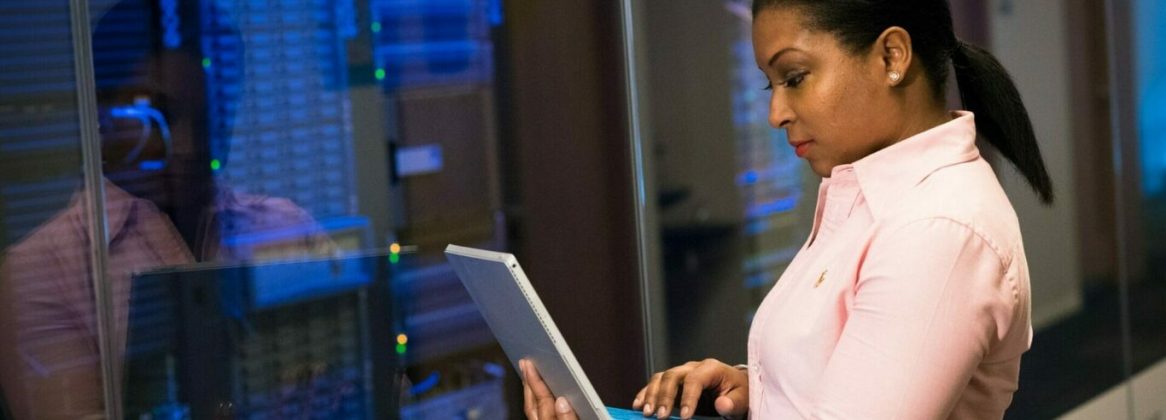While the potential of Industry 4.0 and the benefits of digitalization are apparent, implementing new technologies and driving adoption at scale is equally challenging. Here are insights and advice from four industry leaders who are at the forefront of digitalization.
Mike Mansuetti, President of North America, Bosch
“Back then people didn’t really know what IoT meant for them, so the key was to demystify how we were becoming a digital company and to bring everybody along on that journey.”
Since the start of Bosch’s digital transformation journey, Mike Mansuetti, in his role as President of North America at Bosch, has been at the forefront of the company’s efforts in the Continent. According to Mr. Mansuetti, Bosch’s idea at the outset was to use digital transformation as an ‘umbrella’- a large-scale endeavor where strategy and forward-thinking are prioritized over a myopic approach.
Bosch didn’t just invest in digitalization, but they ensured that workers were data literate and could glean value from the massive data sets generated by the company. Some of Bosch’s employees have had to adapt to new roles, others evolved in their former roles, but the unifying factor was that everyone had to learn and fit into a new working model.
Bosch’s trump card through their digitalization has been an ‘enabling culture’ and a ‘long view’ that allows employees to see for themselves the endless possibilities that data provides. By showing employees the value of digitalization to their work, Bosch improved buy-in and succeeded in cultivating momentum for change.
Dave Sheldon, Head of Global Supply Chain Development, Nestlé
“To stand still is to go backward – that’s why we need to bring technology into our supply chains, proactively and in a collaborative approach with our partners.”
Nestlé is investing in blockchain to make it simple and ultra-convenient to track the journey of food products. With over 400 factories around the world, the company has had to act proactively to enhance visibility across its supply chain.
Nestlé is a founding member of IBM food trust – a SaaS solution that houses food supply chain data (journey, location, temperature, certifications, etc.). Also, the company recently announced a partnership with blockchain platform OpenSC, a move that signaled its foray into open blockchain technology and outlined its commitment to supply chain transparency.
Using blockchain allows Nestlé to garner real-time account and traceable logs of all transactions occurring within its network. From farmer to last-mile distributor, each stakeholder along the supply chain can generate data points, and upload with unique ‘identifiers’ – all in a safe and data-secure ecosystem. This creates an ‘auditable flow of data’ that promotes accountability for the company and builds trust with customers.
Michael Deal, Vice President of Digital Transformation, ExxonMobil, USA
“It’s easy to get wrapped up in the coolness of the technology but forgetting that success in the digital space is about enabling the business to be more profitable.”
Exxon leverages digital technology to streamline its processes. These technologies deliver accurate results for the company, besides increasing their operator’s efficiency and individual performance. Exxon’s digitalization approach, according to the Vice President of Digital transformation, Michael Deal, is to ‘identify a high priority business problem that is aligned with its strategy’ and tackle this problem using digitalization.
After digitalizing these areas, Exxon sought to understand the synergy between its workers and systems with information flow. This helped the company project workloads along the lines of the new technology.
Overall, Exxon has gained significant benefits from implementing digital technologies. In the company’s Texas plant, digitalization has helped in areas ranging from cost reductions, revenue growth, operations/ safety reliability, and enhanced responsiveness to market trends. In the Permian basin, for example, estimates are that the company’s use of well cellular service and automated reports will save around $100 million per year from reductions in production downtime and site visits. This is besides their use of AI for gas lift calculations and automated technology to increase the rate of drilling penetration.
For Exxon, success in the digital space is far removed from aesthetics with the sole focus on ‘enabling the business to be more profitable’.
Wendy Herrick, Head of Digital Supply Chain, Unilever
“It’s not about a start and an end, and we’ve transformed now. {…} it’s about serial innovation to make sure that you continue to win in the marketplace and, I would say, make sustainable living commonplace”
In a conversation with Michael Krigsman of CXOTalk, Wendy emphasizes the need to embrace the learning journey. “We went from knowing it all to learning it all, and that’s one of our mantras. We really needed to open our minds to what’s possible and what’s out there.”
Already, Unilever is modeling digital twins of its factories and using the alternative virtual ‘plant’ for enhanced testing capabilities. The digital twin, an upshot of connected manufacturing, is a fixture in several of the company’s plants, as are machine sensors and IoT technology.
On this note, the company is working with Microsoft to create virtual versions of around 300 of its plants over the next year to enjoy the full-scale capabilities of connected manufacturing and increasing efficiency, productivity, and flexibility at its facilities.
Both giants (Unilever & Microsoft) have previously collaborated on a pilot at Unilever’s Valinhos plant in Brazil. The resulting digital twin became operational at about four weeks and allowed Unilever to tailor the temperature condition of its soap before setting it into bars. Moreover, the Valinhos project saved the company nearly $3 million and improved the productivity of its operations.




